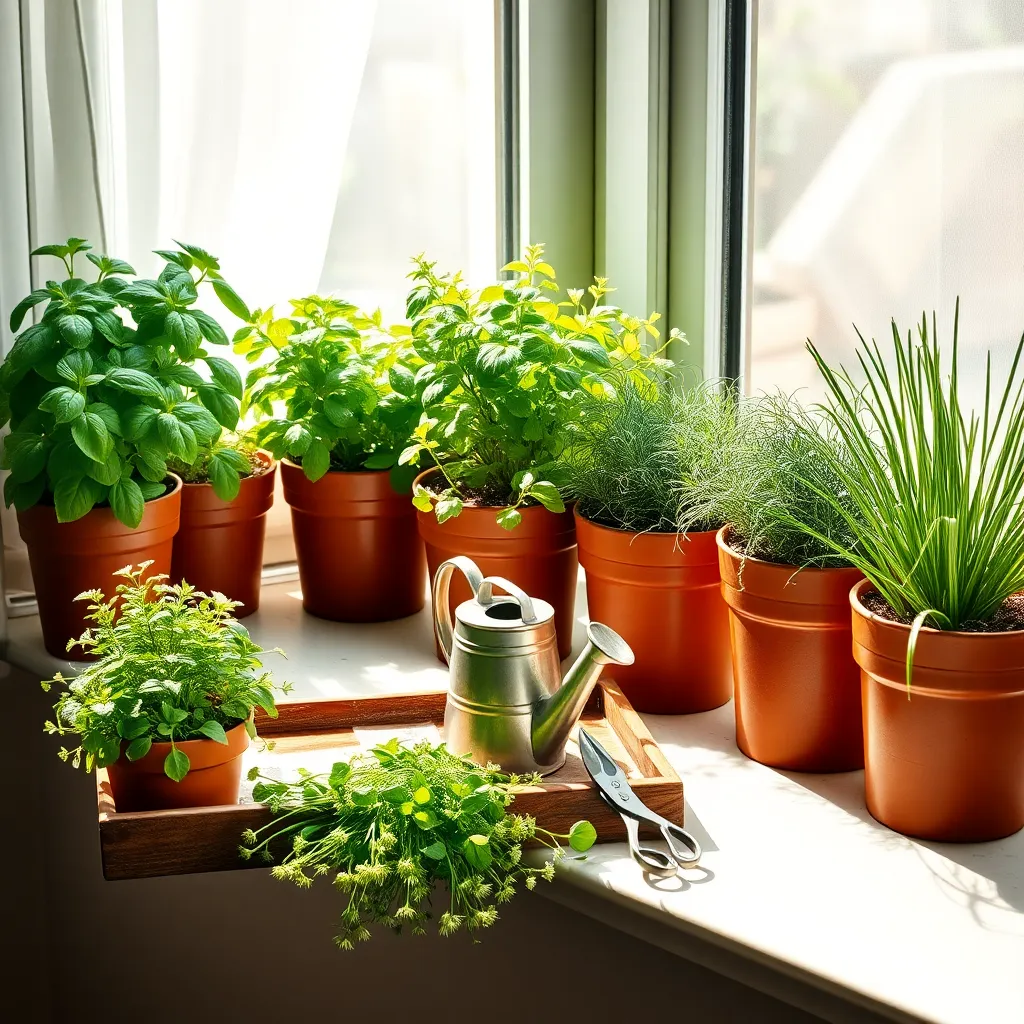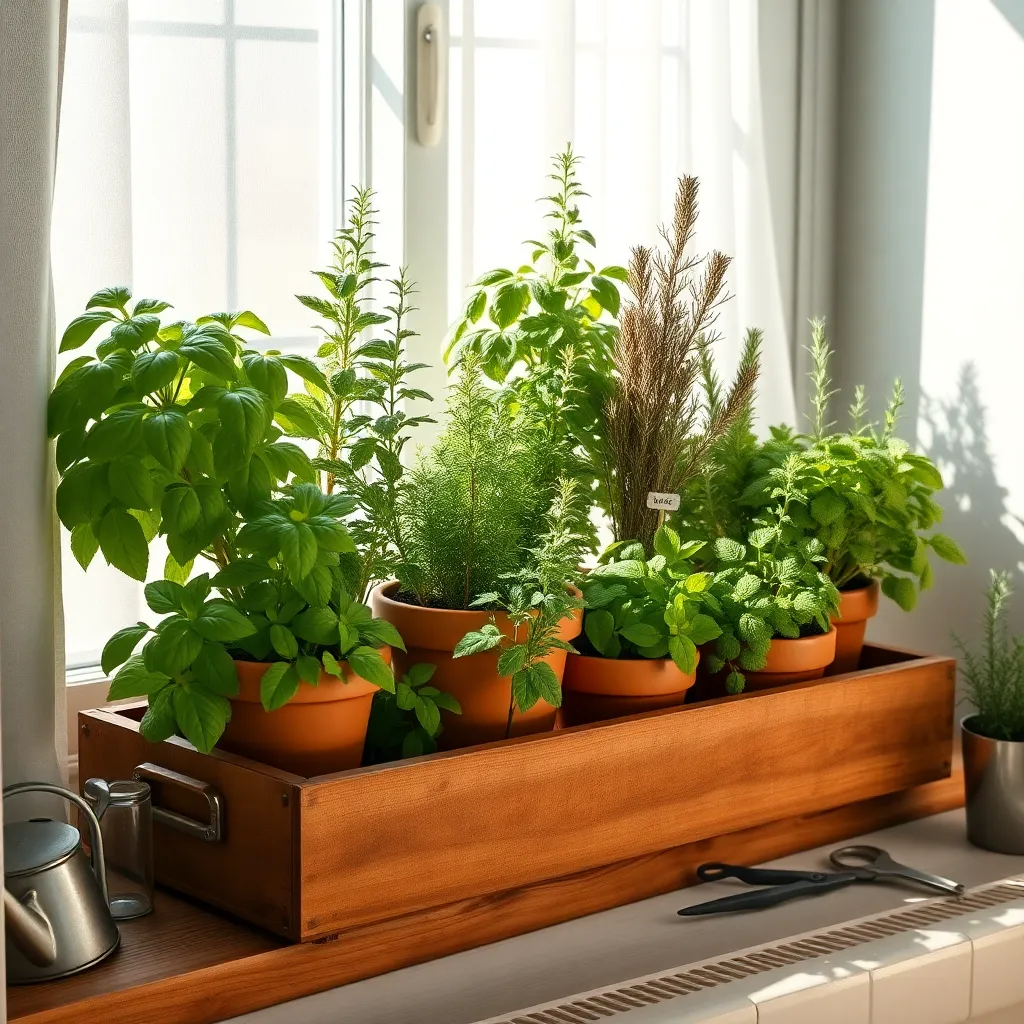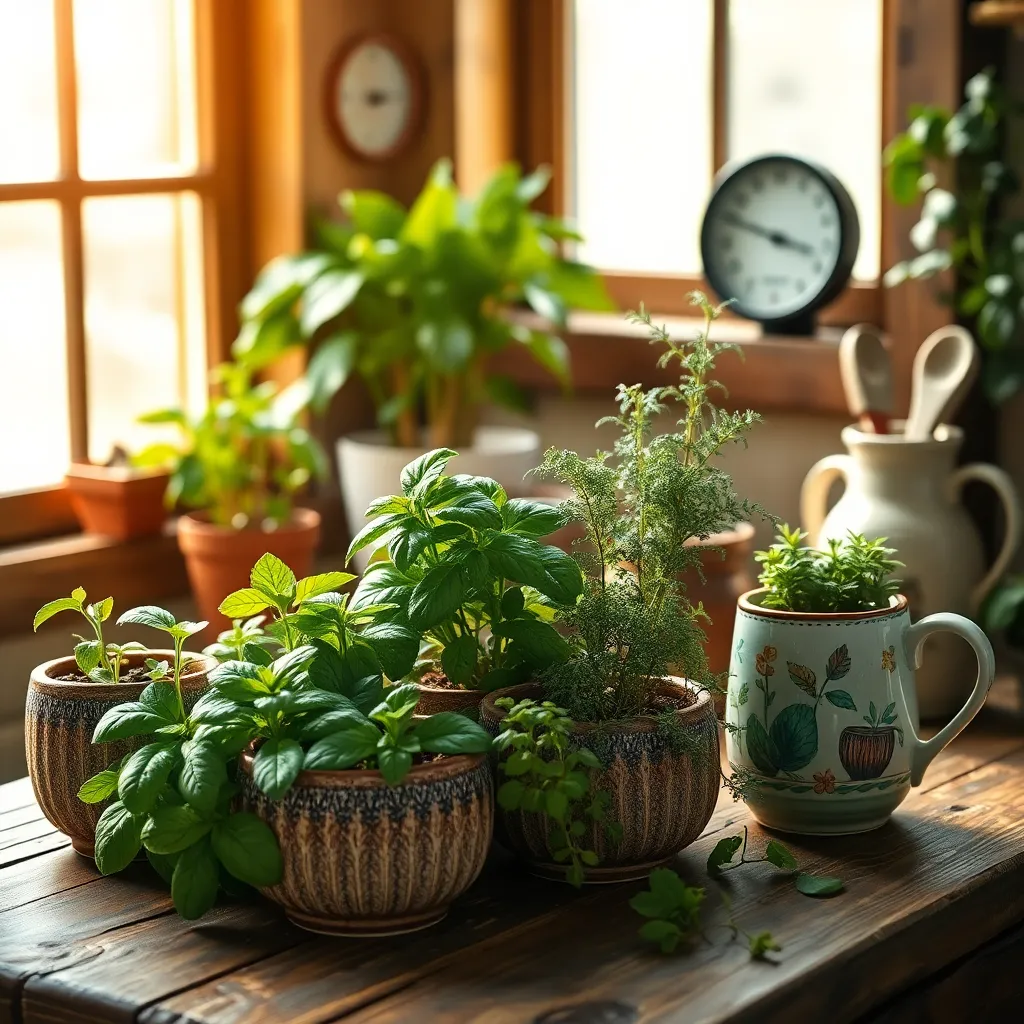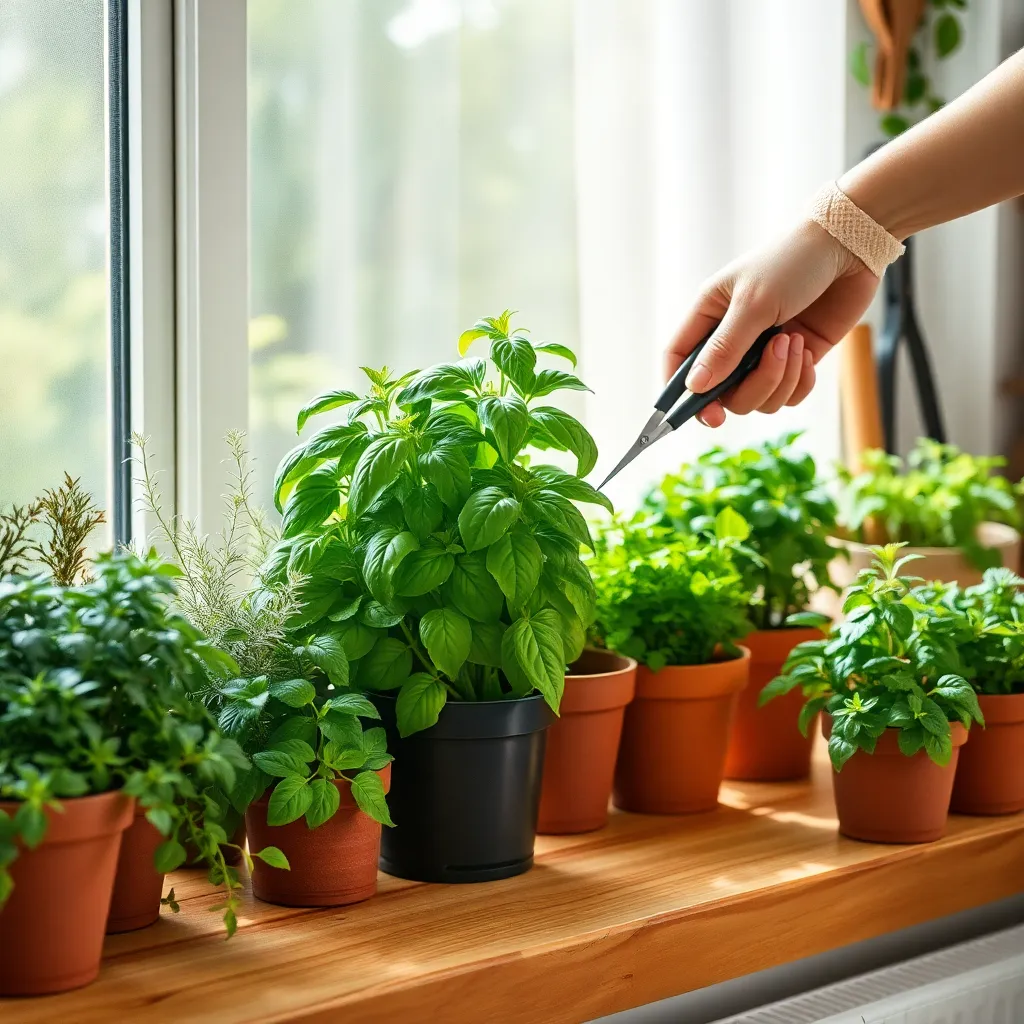Imagine stepping into your kitchen and plucking fresh basil leaves or fragrant rosemary sprigs right from your own indoor garden. Whether you’re a budding gardener just starting or a seasoned green thumb looking to expand your botanical repertoire, growing herbs indoors offers a delightful way to bring the joys of gardening into your home all year round.
This guide is crafted to inspire and equip you with practical tips for cultivating a thriving indoor herb garden, transforming your living space into a lush oasis of flavor and aroma. Not only will you enjoy the satisfaction of nurturing life, but you’ll also reap the benefits of having fresh herbs at your fingertips, elevating your culinary adventures and enhancing your well-being.
With our collection of expert insights and tried-and-true techniques, you’ll discover how easy and rewarding it is to care for herbs indoors, boosting your confidence in your gardening skills. So, let’s embark on this verdant journey together, and watch as your home transforms into a vibrant, fragrant sanctuary that nourishes both body and soul.
Choose South-Facing Windowsills

Placing your herbs on a south-facing windowsill is ideal because it provides the most sunlight. Herbs such as basil, thyme, and rosemary thrive with at least six hours of direct sunlight per day, which a south-facing exposure can often provide.
Ensure your windowsill is free from obstructions like curtains or blinds during the day to maximize light exposure. If natural light is limited, consider supplementing with a grow light for an added boost, especially during the shorter winter months.
It’s crucial to monitor the temperature on a south-facing windowsill, as it can get quite warm. Keep an eye on your herbs, ensuring they don’t dry out by sticking your finger into the soil; water them when the top inch feels dry.
For those looking to optimize the growing conditions, use a well-draining potting mix specifically designed for herbs. This type of soil retains the right amount of moisture while allowing excess water to drain away, preventing root rot.
Use Lightweight Potting Mix

When growing herbs indoors, using a lightweight potting mix can significantly enhance plant health. These mixes are formulated to provide excellent drainage, which is essential for preventing root rot in potted herbs.
Opt for a potting mix that includes ingredients like perlite or vermiculite, which improve aeration. These components help maintain the right balance of air and moisture, ideal for herbs like basil and mint.
For beginners, a pre-mixed herb-specific potting mix is a great choice as it contains the necessary nutrients for growth. More experienced gardeners might blend their own mix using equal parts peat moss, perlite, and coarse sand.
Watering frequency is crucial when using a lightweight mix, as it tends to dry out faster than garden soil. Check the moisture level by inserting your finger about an inch into the soil; if it feels dry, it’s time to water.
Rotate Pots Weekly for Growth

Rotating your pots weekly is a simple but effective way to ensure even growth for your indoor herbs. Light is essential for plant development, and consistent exposure from all sides prevents uneven growth and leaning.
By turning your pots just a few degrees every week, you can help your herbs grow more symmetrically and robustly. This practice mimics the natural movement of the sun, aiding in the even distribution of light and warmth.
When positioning your herbs, place them in a location where they receive bright, indirect sunlight. A south or west-facing window is often ideal, but be mindful of too much direct sunlight, which can scorch the leaves.
Maintain a regular rotation schedule by marking your calendar or setting a reminder. This ensures you don’t forget this critical step in plant care, which can make a noticeable difference in the health and appearance of your herbs.
Maintain Consistent Indoor Temperature

Maintaining a consistent indoor temperature is crucial for the healthy growth of herbs. Fluctuations in temperature can stress plants, leading to stunted growth or wilting.
For most herbs, aim to keep the indoor temperature between 65°F and 75°F during the day and not lower than 55°F at night. Use a thermometer to monitor the temperature near your plants, avoiding locations near radiators or drafty windows.
Consider using a small fan to circulate air around your herbs, which can help maintain a stable environment and prevent fungal growth. This airflow mimics outdoor conditions, helping strengthen plants and improve their resilience.
Advanced growers may consider using a programmable thermostat to automatically adjust temperatures, ensuring optimal growth conditions at all times. Consistency is key; even a slight deviation from the ideal range can affect the essential oils and flavors of your herbs.
Prune Regularly for Bushier Plants

Pruning is a powerful technique to encourage your indoor herbs to grow bushier and healthier. By regularly trimming back the stems, you allow the plant to focus its energy on producing new growth rather than maintaining older leaves.
To get started, use a pair of clean, sharp scissors or pruning shears and make cuts just above a leaf node. This is where new branches will emerge, leading to a fuller, denser plant. For beginners, a good rule of thumb is to prune about one-third of the plant each time you trim.
Remember to prune in a way that maintains the natural shape of the herb, ensuring even growth. Regularly removing dead or yellowing leaves also helps prevent disease and improves air circulation around the plant, which is crucial for indoor environments.
For those looking to experiment, try pinching back the tips of your basil or mint to encourage lateral branching. Advanced gardeners might explore techniques like cutting back to the main stem to rejuvenate older, woody herbs. Consistent pruning not only supports a bushier appearance but also ensures a steady supply of fresh herbs for your kitchen.
Conclusion: Growing Success with These Plants
As we wrap up our exploration of “Tips for Growing Herbs Indoors,” let’s recap the five essential relationship concepts that can also be applied to nurturing your personal connections. First, just as herbs need the right environment, relationships thrive in supportive settings. Second, consistent care, akin to regular watering, is crucial for growth. Third, understanding each other’s needs, much like knowing the light requirements of different herbs, leads to harmony. Fourth, patience in allowing time for growth is key, and lastly, celebrating small wins, such as the first signs of sprouting, keeps the journey joyful.
To translate these insights into action, consider scheduling a weekly check-in with your partner to align your needs and expectations. Doing so creates a nurturing environment for your relationship to flourish.
Be sure to save or bookmark this article so you can revisit these practical tips whenever you need a refresher. By committing to these nurturing practices, you set the stage for a relationship that not only survives but thrives. Remember, the seeds of a successful relationship are sown with care, attention, and a willingness to grow together. Your flourishing relationship is just around the corner!
